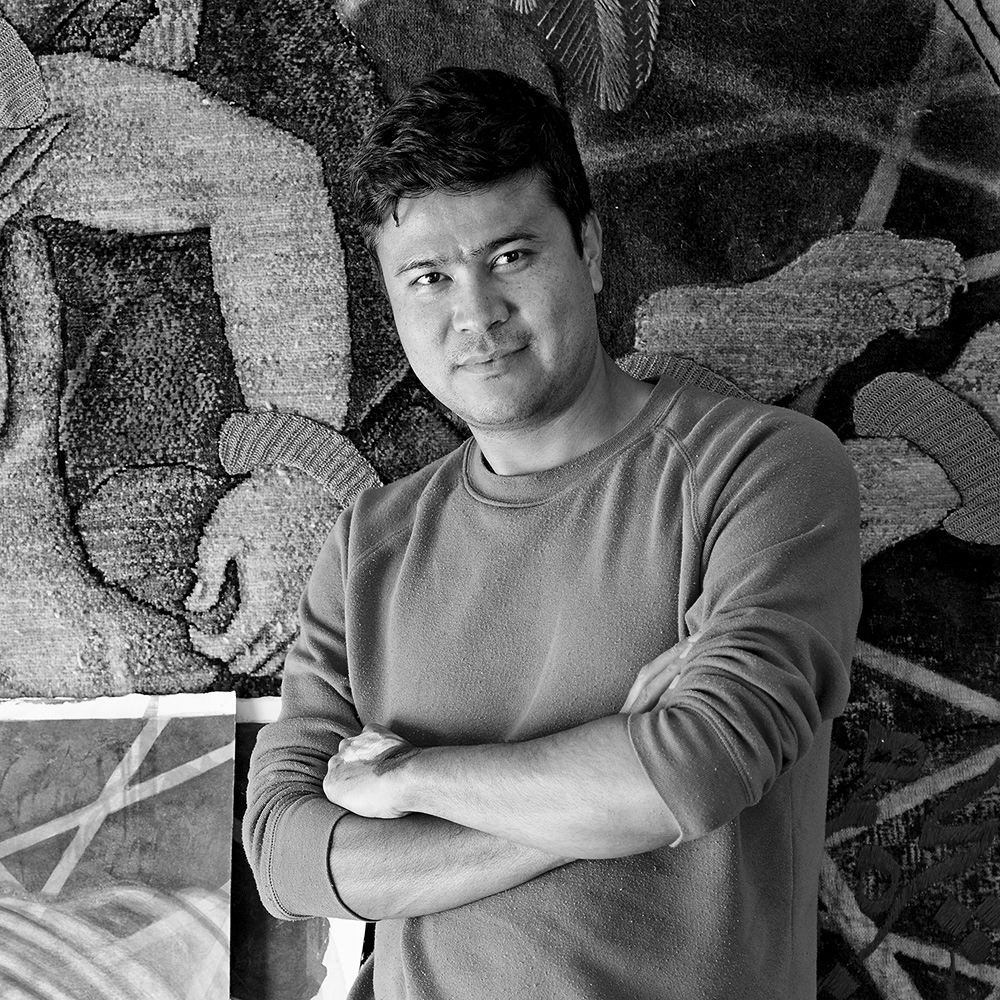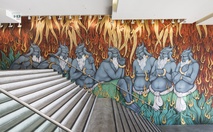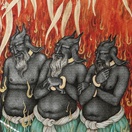Khadim Ali
Sydney
2017
Displayed 2017 at Museum of Contemporary Art Australia

Khadim Ali
Born 1978, Quetta, Pakistan. Lives and works Sydney
After growing up in Pakistan as a refugee, Khadim Ali was trained in classical miniature painting at the National College of Arts in Lahore and in mural painting and calligraphy in Tehran. Ali’s family is from Bamiyan (Hazarajat region), where in 2001 the colossal sixth-century Buddha statues were destroyed. The Shahnama/Book of Kings was read to Ali by his grandfather and its illustrations were his first lessons in art history. Through his work, created in the style of Indian Mogul painting, Ali explores and updates the motifs of the poem, telling stories about how meaning shifts as words and images are perverted through ideological adoption.
Artist text
by Blair French
In The Arrival of Demon (2017), Khadim Ali’s massive wall mural adorning the Museum of Contemporary Art Australia’s Foyer Wall, a group of larger-than-life figures appears to congregate on the stairs leading up to the MCA galleries. Similar to the devil-like figures that populate much of the artist’s work, these characters, based on the hero Rostam from the tenth-century epic poem Shahnama/The Book of Kings, can embody both good and evil but here appear without wings, giving them a more sage-like presence. Most stand, hands crossed over bellies, stroking beards or leaning on the stairs. One appears to sit, elbows on thighs, looking out to the entrance of the Museum and Circular Quay beyond, the site of the first British colony, the arrival of the first ‘boat people’. While the poses of the figures suggest interaction, their mouths are closed. There is no apparent conversation here. They simply wait.
Flanking a staircase, the 15-by-seven-metre mural depicts the figures on a threshold, in some form of in-between space neither here nor there. They are backed by a wall of fiery red, licked with gold flame. Sprouts of resonant green curl up from the base of the work, immediately before and to the side of the figures, weaving into the same green as their clothing. Above them hangs a canopy of golden eucalypt foliage.
This pictorial construction is partly drawn from the illustrations that ghost the pages of the Australian passport, a document Ali, as a member of the Hazara community from Central Afghanistan, received only in 2015 after having lived in Australia since 2009. Images of apparently typical Australian subjects populate these pages, from a variety of native fauna to Aboriginal designs and various scenes of surf lifesavers, men playing cricket, scuba divers on a coral reef, people sunbaking and swimming at the beach, an empty outback dirt road, a surfer, a country pub, a road train, a drover, a camel train, and so on in a litany of national clichés. These vignettes are framed by overhanging native foliage that, as Ali describes, has the effect of separating the viewer from the scene before them. On receiving his Australian passport, Ali was struck by the way in which these images cast him as a viewer in a manner akin to his experience as a migrant – sat at the fringes, barely visible, peering in through the foliage upon scenarios to which he would possibly never truly belong.
This experience is both amplified and inverted in The Arrival of Demon. In a work drawing on his training in both miniature painting in Pakistan and mural painting and calligraphy in Iran, and created in paint and gold leaf applied directly to the wall over a number of weeks with the aid of assistants, the viewer is positioned looking out upon the wall from the public space of the Museum Foyer, confronting the figures at the fringes, massive and impossible to miss as they wait. The experience of interminable, soul-destroying waiting is exactly that which Australia demands of those seeking refuge here. But whereas all effort is made to keep that process and the torturous pain accompanying it publicly invisible, Ali has here dramatised it with great insight, aesthetic sophistication and impact on a site of significant public visibility and historical importance.
Khadim Ali discusses his work
4min
Khadim ALI discusses his work, The Arrival of Demons

